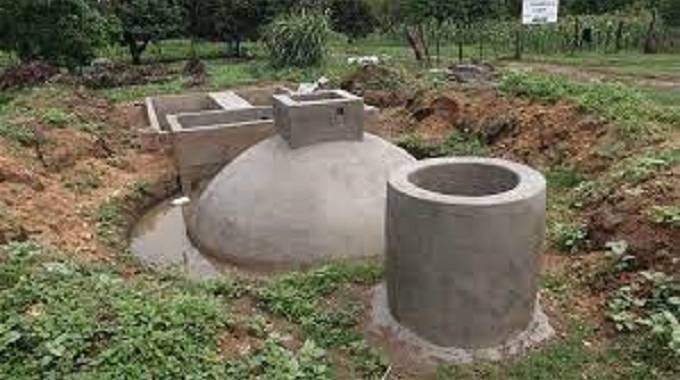
This is a device that heats up water for bathing, washing, cleaning and other domestic tasks using solar energy. This technology is generally installed on the north-facing roof for southern hemisphere locations to harness more solar energy available to heat water during daytime for storage in an insulated storage tank for use when required.
A solar water heater comprises of an array of solar collectors to collect solar energy and an insulated tank to store hot water. During the day, water in solar collectors gets heated and is either pumped or flows automatically on thermos-siphon principle to the storage tank.
Types of solar water heaters
There are two types of solar water heaters currently available on the market which are:
One based on flat plate collectors (FPC) and the other based on evacuated tube collectors (ETC). FPC-based systems are metallic nature and have a longer life as compared to ETC-based systems made of glass which are fragile in nature.
Both these systems are available with and without heat exchangers. They can also work with and without a pump. Systems without a pump are known as thermos-siphon systems and those with a pump are known as forced circulation systems.
Evacuated tube collector (ETC)
Flate plate collector (FPC)
- Chamisa under fire over US$120K donation
- Mavhunga puts DeMbare into Chibuku quarterfinals
- Pension funds bet on Cabora Bassa oilfields
- Councils defy govt fire tender directive
Keep Reading
ETC based systems are cheaper than FPC based systems and they perform better in very cold areas. FPC based systems have an anti-freeze solution and are also good in very cold sub-zero temperatures, although they cost more than the ETC based systems. However, in other regions, both perform equally good.
Systems working on the thermos-siphon principle are simple and relatively inexpensive. They are suitable for domestic and small institutional applications, provided water quality is good and it doesn’t have high chlorine contents. Forced circulation systems are generally preferred in industries or large establishments.
Where water is hard and has high chlorine content, an FPC based system must be used with a heat exchanger as it will avoid scale deposition in copper tubes of solar collectors which can block the flow of water as well reduce its thermal performance. ETC based systems will not block the flow of water but its performance may deteriorate due to deposition of salt contents on inner surface of glass tubes, which could be cleaned easily once in a year or so.
The flat-plate panels are, however, much stronger and more durable than the tubes and a quality flat-plate collector panel will generally enjoy a longer lifespan than an evacuated tube collector panel. This explains why FPC geysers cost more than the ETC solar geyser of the same size.
Research findings from Zera Commissioned SWH Study
In 2018 Zera commissioned a solar water heater study conducted by the University of Zimbabwe which identified that flat-plate-collector type of solar hot water systems are more cost-effective than their evacuated-tube counterparts, when used for solar water heating applications in Zimbabwe. This is because of the higher efficiency of flat plate collectors at the temperature needed for domestic hot water and also because of the generally longer warranty (an indicator of longevity) guaranteed for flat plat collectors.
Typical flat plate collector
Benefits of solar water heater
- A 100 litre per day capacity system suitable for 3-4 people can save up to 1,500kWh annually, depending on hot water used.
- Higher capacity systems will save a higher amount of electricity/fuel while further reducing a remarkable amount of CO2 emissions.
- The SWH reduces demand on the electricity network and helps reduce load shedding. By using a solar geyser, one can save up to 40% of an average household water heating cost. It is estimated that replacing all the currently installed electric geysers with solar geysers will release approximately 420 MW peak demand from off the grid, thus reducing load shedding as well as electricity imports.
Policies have been put in place to encourage the uptake and use of renewable energy technologies. The National Renewable Energy Policy promotes the deployment of solar water heaters and has put a target of 250,000 solar geysers to be installed by year 2030. The National Energy Policy of 2012 estimates the number of electric geysers installed in households to range from 250,000 to 300,000.
Solar geyser performance on cloudy/rainy day
On cloudy/rainy days, you still get warm water as water gets heated due to diffused radiation available in the atmosphere although it takes longer periods to heat. The system, however, is either connected to an electric geyser in the house or an electrical back-up is provided in the storage tank of the system which is switched on when water is not sufficiently hot. So, you still get hot water all the time even on rainy days.
Standards for solar water heaters
Standards for solar water heaters were published for use in Zimbabwe and are available at Standards Association of Zimbabwe to all stakeholders who need them. Below shows the list of the solar water heater standards:
Standard
Description
ZWS ISO 9459:1999
Solar heating systems–– Outdoor test methods for system performance characterization and yearly performance prediction of solar system
ZWS 1017
Domestic solar water heaters – Mechanical qualification tests
ZWS 1016
Installation, maintenance, repair and replacement of domestic solar water heating systems
ZWS 1025
Domestic storage solar water heating systems.
ZWS 1032
Domestic solar water heaters –– Thermal performance using an outdoor test method
ZWS 1032
Domestic solar water heaters–– Thermal performance using an indoor method
BS EN 12975-1:2006+A1:2010
Thermal Solar Systems and Components Solar collectors
BS EN 12976-1:2021
Thermal solar systems and components factory made systems
Incentives for solar geysers
As a way to promote renewable energy technology, solar geysers are exempted from import duty as provided for through SI 147 of 2010, however only VAT (14.5%) is payable. This incentive is only applicable to solar geysers without an electrical back up element.
Solar Water Heating Regulations – SI 235 of 2019
Government gazetted the solar water heating regulations SI 235 of 2019 which requires all new buildings to have solar geysers installed or else they will not be connected to the grid. ZETDC is in the process of implementing the regulations and as such they have amended the connection inspection forms to incorporate the requirements of the regulations.
The regulations allow for exemption of the following premises:
- a) premises with technical limitations.
- b) premises supplied with hot water from a cogeneration plant in or proximate to the premises.
- c) premises utilising electricity generated from renewable energy and the excess is used to heat water as a dump load; or
- d) such other premises as the Authority may determine.
Maintenance requirements
Domestic SWH systems do not need significant maintenance requirements. Occasional leakages in the plumbing could be easily repaired by common plumbers. In case quality of water is hard, scale deposition in the collectors may result over the years. This may require de-scaling with acids. Broken glass may also have to be replaced by the suppliers. If outside exposed surfaces are painted, the paint may have to be redone every 2-3 years to prevent corrosion of the surfaces. – Zera










